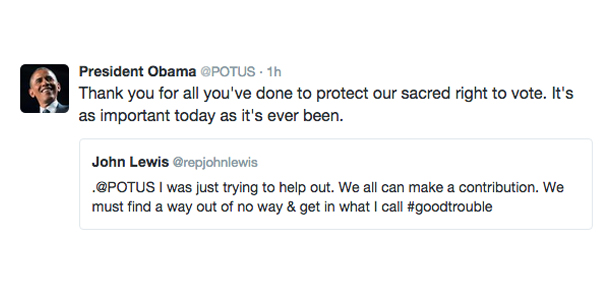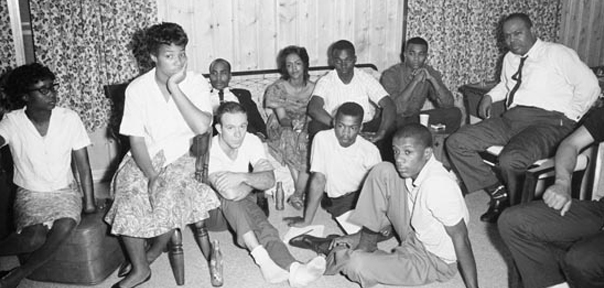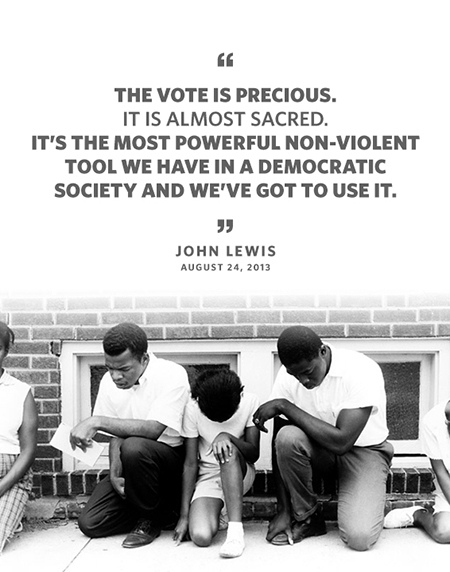The Voting Rights Act
– President Obama, February 12, 2013
Watch a conversation with the President:
The Voting Rights Act: 50 Years Later
The President Commemorates the 50th Anniversary of the Voting Rights Act
Congressman John Lewis and Melissa Harris-Perry Talk About Voting Rights
Read the:
President's reflection on the anniversary Message Congressman John Lewis sent to the White House email list
Read a brief history of the Voting Rights Act:
Until the ratification of the 15th Amendment in 1870, African American men did not have the constitutional right to vote. (African American women did not gain the right to vote until passage of the 19th Amendment in 1920, when all women obtained this right). But even with this constitutional right, many states prevented African Americans from enjoying the benefits of full citizenship through laws known as Jim Crow laws.
To prevent African Americans from voting, many states enacted legislation that erected barriers to voting — such as literacy tests, moral character tests, property ownership requirements, and poll taxes.
Although many of these laws were "colorblind" on their face, they were designed specifically to exclude African American citizens by allowing white election officials to apply the procedures selectively.
The town of Selma, Alabama was particularly infamous for stopping African Americans from voting, and blocking their voter registration efforts. But on March 7, 1965, hundreds of people gathered in Selma to march to Alabama's capital city of Montgomery. They marched to secure African-Americans' constitutional right to vote — even in the face of the segregationist system that aimed to make it impossible.
On the Edmund Pettus Bridge in Selma, state troopers and county members violently attacked these marchers, leaving many of them injured and bloodied — and some of them unconscious. But the marchers didn't stop. Two days later, Dr. Martin Luther King, Jr. led roughly 2,500 people back to the Pettus Bridge before turning the marchers around — obeying a court order that prevented them from making the full march.
The third march started on March 21, with protection from 1,000 military policemen and 2,000 Army troops. Thousands of people joined along the way to Montgomery, with roughly 25,000 people entering the capital on the final leg of the march. On March 25, the marchers made it to the entrance of the Alabama State Capitol building, with a petition for Gov. George Wallace.
Only a few months later, Congress passed the Voting Rights Act, which President Lyndon B. Johnson signed into law on August 6, 1965. The Voting Rights Act was designed to eliminate legal barriers at the state and local level that prevented African Americans from exercising their right to vote under the 15th Amendment.
There's still work to do.
Fifty years after the Voting Rights Act became law, however, there's still work to be done. Laws are still being passed across the country that make it harder to vote.
In 2013, the Supreme Court struck down a key part of the Voting Rights Act, which allowed states to begin changing their voting laws without procedural protections in place.
President Obama has called on Congress to restore the Voting Rights Act and ensure that all Americans have the right to vote.
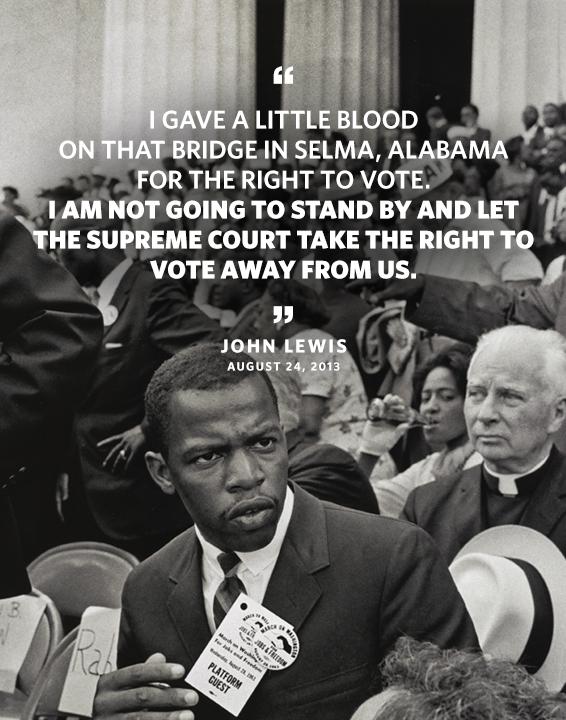
How can you help?
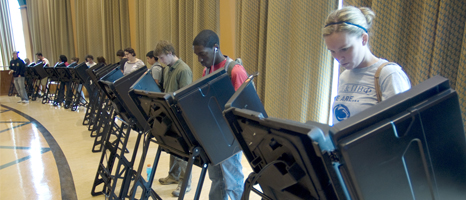
Get People to the Polls
<If you want to help get people to the polls, contact your local election office and find out how you can volunteer to register voters, or work the polls on Election Day.

Business Owners
If you're a business owner, make a commitment to give your employees time off to vote during elections.

Register to Vote
If you need to register to vote — or if you have questions about your local election office, voting by absentee ballot, or how to avoid voter fraud — visit USA.gov.
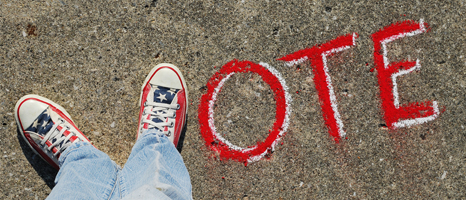
Learn More About Your Right to Vote
Learn more about the history of the right to vote in the United States in one WhiteHouse.gov page.
